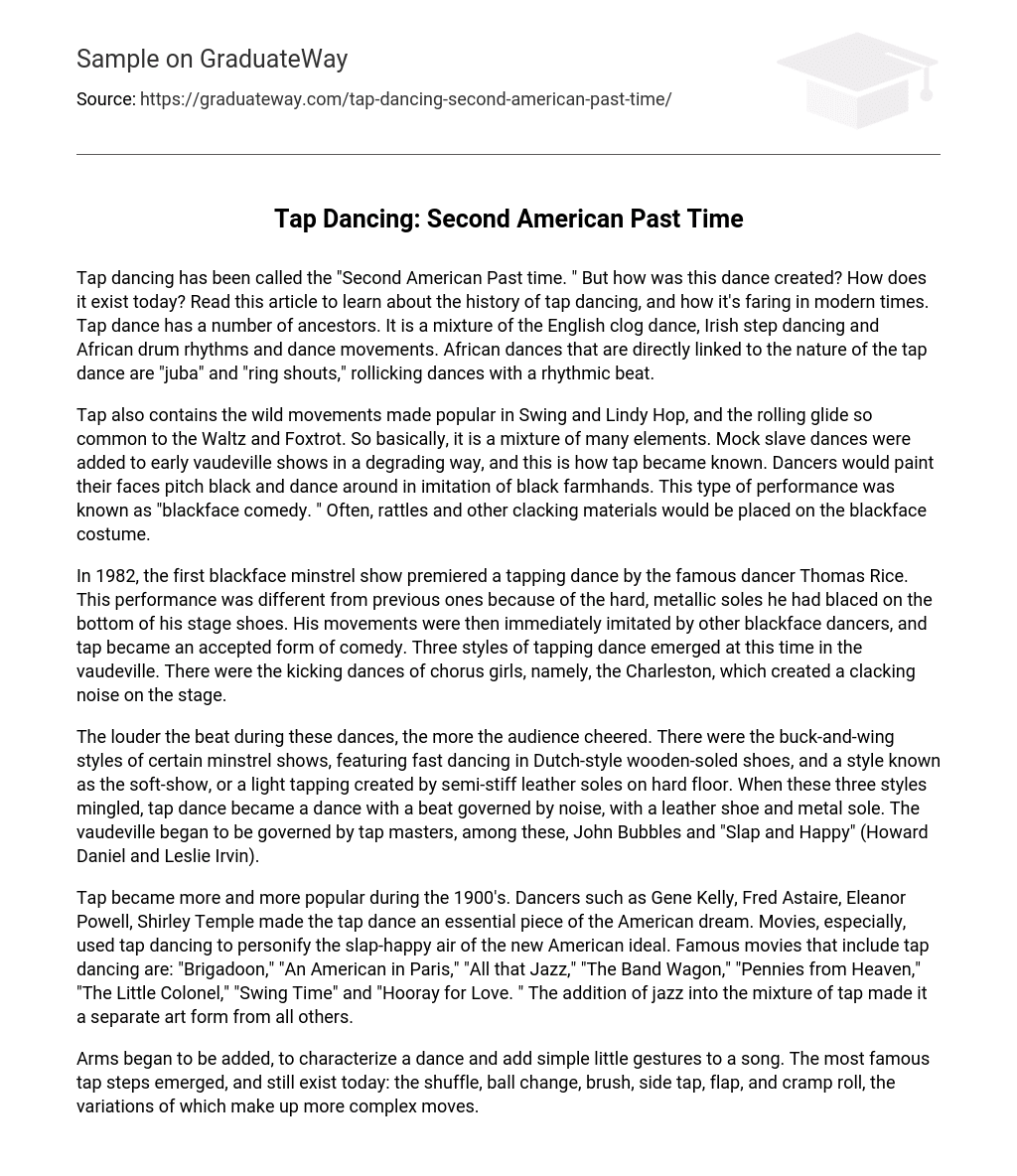The history of tap dancing and its current state will be explored in this article. Tap dance is often referred to as the “Second American Past time.” Its origins can be traced back to a combination of the English clog dance, Irish step dancing, and African drum rhythms and dance movements. Notably, African dances like “juba” and “ring shouts” have a direct connection to the nature of tap dance, as they feature lively movements and a rhythmic beat.
Tap dance incorporates elements from Swing, Lindy Hop, Waltz, and Foxtrot. It is a blend of various styles. During the early vaudeville shows, mock slave dances were introduced in a derogatory manner, giving rise to tap dancing. These performances involved dancers painting their faces pitch black and mimicking the movements of black farmhands. Such acts were commonly referred to as “blackface comedy.” The blackface costume would often include rattles and clacking materials.
The first blackface minstrel show in 1982 showcased Thomas Rice, a renowned dancer who introduced tapping dance. What made his performance unique was the addition of hard, metallic soles on his stage shoes. Other blackface dancers quickly copied his movements, leading tap to become an established form of comedy. Concurrently, vaudeville saw the emergence of three tapping dance styles. Notably, chorus girls performed kicking dances like the Charleston, creating a clacking sound on stage.
The audience cheered more as the beat grew louder during these dances. There were various styles of dances, including the buck-and-wing styles from minstrel shows. These styles featured fast dancing with Dutch-style wooden-soled shoes. Another style, known as the soft-show, involved light tapping created by semi-stiff leather soles on a hard floor. When these three styles combined, tap dance emerged as a dance with a beat that was determined by the noise produced by leather shoes and metal soles. Tap masters such as John Bubbles and “Slap and Happy” (Howard Daniel and Leslie Irvin) began to govern vaudeville.
Tap dance gained increasing popularity in the 1900s, thanks to renowned dancers like Gene Kelly, Fred Astaire, Eleanor Powell, and Shirley Temple. These talented individuals made tap dance an essential part of the American dream. Movies in particular showcased tap dancing as a representation of the carefree spirit of the new American ideal. Notable films featuring tap dance include “Brigadoon,” “An American in Paris,” “All that Jazz,” “The Band Wagon,” “Pennies from Heaven,” “The Little Colonel,” “Swing Time,” and “Hooray for Love.” The infusion of jazz into tap dance elevated it to a distinct art form in its own right.
Arms were introduced to add character to a dance and incorporate basic gestures into a song. The shuffle, ball change, brush, side tap, flap, and cramp roll are the most renowned tap steps, which continue to be used today. These steps form the foundation for more complex moves. Tap dancing has also made appearances in various Broadway productions. “Black and Blue” and “The Cotton Club” are two successful examples of tap being integrated into the stage. However, despite its popularity among the majority of Americans, tap dancing has been a contentious topic for African-Americans.
The popularity of tap dancing among African-Americans was initially protested due to its origins as a mockery of early slaves, with irreverent references to black slavery persisting until the 1960’s. Tap dance originally incorporated foot movements meant to convey clumsiness, buffoonery, and attempts to flee. Despite the influence of other styles, the essence of the dance remained for many. However, this has all changed thanks to Savion Glover, a popular African-American artist who is currently revitalizing tap across the United States for a new generation. Born in Newark, New Jersey, Glover is at the forefront of tap dance, having revolutionized it by infusing hip-hop rhythms and rap beats. Numerous news sources throughout America have hailed Glover as the “man who saved tap dancing,” and rightfully so. Glover began his career on Broadway and Sesame Street as a young actor, gaining fame through his Tony award-winning performance in “Bring in ‘da Noise, Bring in ‘da Funk.” This production achieved international recognition by introducing lightning-fast tap steps set to intense, booming beats.
Since achieving success, Glover has personally taken on the mission to preserve tap dancing and prevent it from being forgotten. He has initiated programs that train young artists in tapping with a fresh style and innovative expression. One of his protégés, Cartier Williams, is a remarkable 10-year-old African-American prodigy. It is both ironic and remarkable that a dance style originally used to mock African-Americans now serves as a platform for internationally acclaimed dramatic and physical expression by African-American artists.





